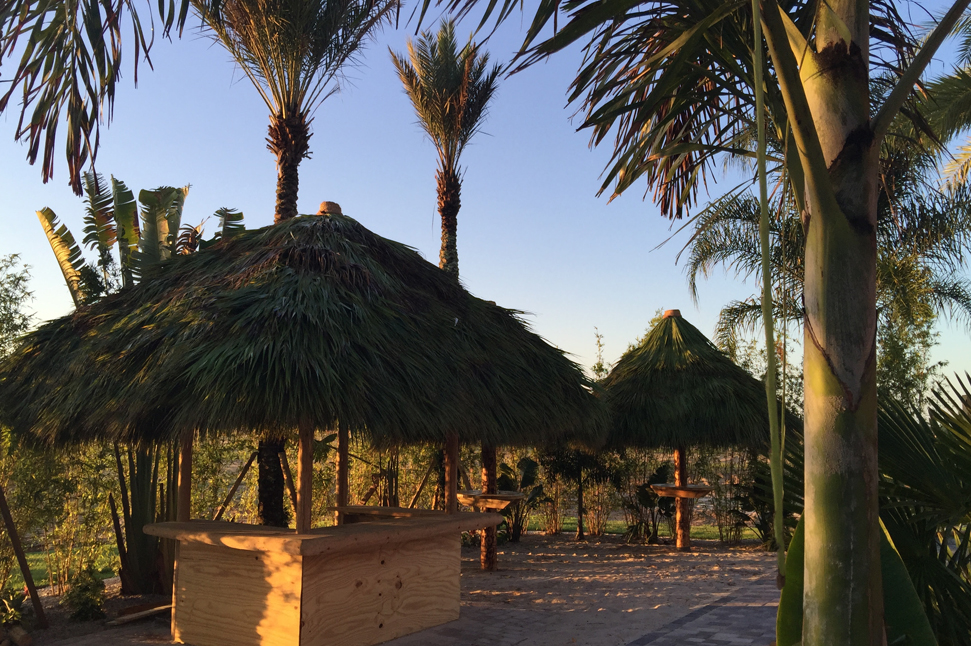
Hold a torch for the tiki lifestyle? Here’s everything you need to get the party started in your own backyard. Whether you want to jump right in with a large project or test the waters as far as the amount of moola spent on your hula, it’s best to pick a style that fits in with your lifestyle and living area. Got a pool? Maybe you want a Polynesian perch so you’ll have it made in the shade when you swim up for a sip. If there’s a side of the house that looks a little bare, maybe it’s crying out for some Caribbean care.
Raise the bar
Whether you’re looking to save with any number of DIY kits and instructions courtesy of Popular Mechanics, Martha Stewart or YouTube, there’s plenty out there to put together with some friends over a pizza and a six-pack. Those looking for a deluxe model may wish to try a local tiki contractor, prevalent in Florida The Tiki Hut Company specializes in custom projects and works frequently at remote and island locations).
Take it from the top
Consider your climate when deciding between natural or synthetic palm panels. High-humidity and heavy-rainfall areas like Florida aren’t good for natural products, whereas others with low humidity, low rainfall, and hot, dry conditions like Arizona are great for them. The upside is they’re less expensive initially, but over the course of time—20 to 30 years to be exact—synthetic requires almost no maintenance, is bug-free, fire retardant, UV resistant, and is light enough on top of subroofs. Natural thatch lasts about 2 to 3 years and must be placed in high-pitch, high-sun areas.
Wood of, should of, could of
While bamboo is the most iconic, rustic peeled cedar and modern pressure-treated eucalyptus are great alternatives depending on your climate and budget. Even better, the first option is easy to maintain by using simple auto wax for the same protection against the sun and rain as your wheels (treat about once every six months). Tiki Hut Company owner Nick Schrauwen suggests putting the most focus on roof and post selection, since the posts and thatching are the only materials you’ll see from the outside.
First things first
The best-laid plans make… perfect! Schrauwen recommends hiding electrical wiring in the roof, once the framing is completed. Then the subroof and thatch can be installed. Just think of positioning lighting and electrical outlets well for fans, TVs, tiki signs and a plug for that Margaritaville blender in advance—you don’t want the wires or outlets to take center stage when there’s so much other Balinese bling.
Wet bar, indeed!
Don’t want to walk back and forth to the kitchen? Then don’t forget about a sink (and water supply and drainage). The most common options are durable and cost-effective stainless steel, with stainless steel or solid-brass faucets to hold up to the elements. But, if you’re looking for seaglass green or seafoam blue, consider granite or granite composite sinks for a pop of color—and to wash the glasses for your pops. Speaking of which…
Raise a glass—or two
What to toast your completed project with? It’s easy to avoid that Parrothead faux pas by loading up on different colors and textures for the maximum punch. Try Margaritaville glassware, kitschy cacti just ready for a salt rim, scorpion bowls, coconut cups … and maori mugs, of course. Don’t forget citronella candles and bright batik stool pillows for the ultimate leid-back vibe.
